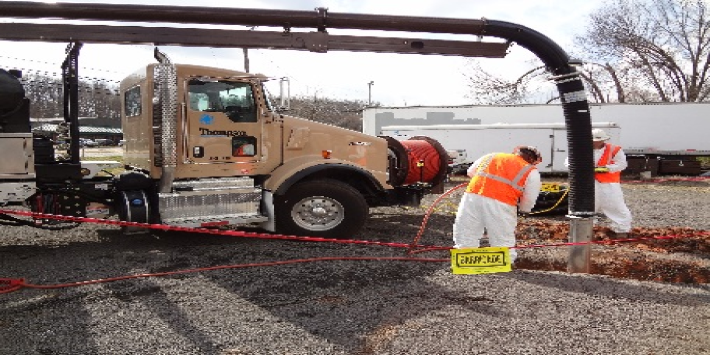Pneumatic- and Hydro-Vacuum Excavation: Damage-free Digging
BLOG

You’ve probably seen warning signs along the roadway that read “Call before you dig,” along with a phone number. Those signs indicate that there likely are water pipes, power lines, gas lines, or other utilities such as cable or fiber optic cables underground in that area.
Striking one with conventional mechanical “yellow iron” digging equipment like a backhoe could be disastrous! In some areas, though, it’s impossible to reliably find out exactly what utilities and obstructions are beneath the surface – especially in older industrial facilities and even in remote terrain when a pipeline has to be installed, for example. In those instances, and when “confident assurance” is needed, a form of vacuum excavation can keep construction on schedule without any damage whatsoever to sub-surface utilities and materials, unlike heavy equipment almost certainly would.
A High Risk Situation
We recently worked with a large Richmond, VA industrial plant that was planning an addition within an older facility. They were hesitant to break ground on the site using traditional excavation techniques because there was a strong probability that there were utilities present.
The planners were unable to find reliable plans detailing the location of those utilities, though, so the risk of hitting a pipe or line was high. Although the site was surveyed by a variety of nondestructive, geophysical investigative and sonar techniques, various sub-surface utilities were in fact still frequently uncovered with the vacuum excavation methodology. Not only would such an incident pose a danger to workers, but it would also cause lengthy and expensive delays.
A Safe Solution
While the high-speed, brute force approach of mechanical excavation wasn’t viable, hydro-vacuum excavation was a great solution for this job. Just as pressurized water removes debris without damaging machinery surfaces it can readily dislodge and facilitate dirt and soil matrix materials into the vacuum conduit without damaging any utility lines that it comes in contact with.
Alternatively, rather than utilizing high pressure water, another technique is to utilize compressed air (pneumatic-assist) for the dislodging and sizing process, which can be performed essentially under dry conditions and offers numerous benefits on numerous job sites. This “safe dig/daylighting” vacuum excavation technique, either by hydro or pneumatic assist, certainly takes somewhat longer than using a backhoe, but when you factor in the possibility of breaking a water main or cutting a power line, it’s worth the extra care!
Balancing Cost, Time, and Safety
When we work with your company to find a solution to a delicate problem like this one, we do our best to strike the perfect balance between cost, safety and time.
Whether we recommend vacuum excavation or another advanced process to meet your needs, you can count on expert service using the best equipment available with our trademark dedication to quality, safety and integrity.
Please email or call us today to schedule an appointment with our experts.
